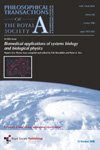Many thanks to The Insitute, IOM3 -Materials World (MW) prompted by their page,"members letters" in particular to F. Glasser and his team at Aberdeen Uni.,Scotland for their work in the "Extraction of CO2 like Sulphur") and CO2 capture in cement and concrete.
Cf. REF's as follows:
1. F.P. Glasser et al. Sequestering CO2 by Mineralization into Useful Nesquehonite-Based Products.
Iom3.org nanocem-cements-future
2. F.P.Glasser et al. Magnesium based cements for CO2 Capture and Utilisation. Cement and Concrete Research.
Capture and sequestering of CO2 -carbon dioxide-otherwise liberated to the atmosphere, is it appears, a minimum requirement in any shale gas extration project. Better, I guess, is the use of CO2 as a raw material to include in innovative materials products. This would certainly help responsible exploitation of such mineral reserves as Coal and Shale.
It is also imperative that coal exploitation, coal burning for power generation must be orientated (urgently) in a similar direction ie in the direction of CO2 sequestration and in the CO2 incorporation in materials to provide new and innovative products.
Fredrik Glasser FIMMM, FRSE replies to a IOM3 member's question "Can we capture CO2 like sulphur." His response is brief "YES WE CAN",
"But the the road to market is not straight forward.
"The intense conservatism of the building industry is an important hold point, so too is the obsession of UK policy with underground storage of liquid CO2 largely to the exclusion of other routes that might deliver positive economic value This policy is neither cheap nor assured and will require massive capital investment investment and ongoing subsidy." [NB. as mentioned Prof Glasser is based in Aberdeen, Scotland the capital (and capital intensive) of UK's fossil energy, North Sea Gas."
My Comment :Glasser's remarks on policy are of particular importance. Considering CO2 as a raw material in the sustainable economic sense to innovate production of new and improved products and processes could possibly stimulate a more diverse and lively economic playing field as opposed to (or at least complimentary to) the "brushing the dirt under the carpet, Capturing and sequestration, building prisons approach.
ALSO
Huge reserves are still available and exploited in several nearby countries, eg. Germany and even moreso Poland in our EU. cf . MW on the huge still unexploited Polish coal reserves
But, could Poland have seen the light?
"Prof. Lewiński's group has shown that appropriately designed precursor compounds in reaction with carbon dioxide lead to fabrication of a microporous material (with pore diameters below 2 nm) resulting from self-assembly of luminescent nanoclusters. Novel microporous material, composed of building blocks with zinc carbonate core encapsulated in appropriately designed organic shell (hydroxyquinoline ligands), is highly luminescent, with photoluminescence quantum yield significantly higher than those of classical fluorescent compounds used in state-of-the-art OLEDs."
Ref:
This above is an over simplified introduction to the huge amount of reaseach being undertaken world wide, on "CO2 as a very useful raw material in a mulitude of processes and products" .
Raw Materials demanding Innovations
"The emissions paradox
Compared to other building materials concrete has a low carbon footprint, i.e. it emits less CO2 per tonne. And yet, the enormous volumes used mean that concrete production accounts for about 3 - 8 percent of the man-made CO2 emissions worldwide.
Comparative relative energy and CO2 per construction material
However, given the very large volumes, total emissions are considerable. Because a small reduction in emission can make a real difference, our team of researchers can punch well above their weight and lay the basis for a global reduction of millions of tonnes of CO2 annually." cf Source:nanocem.org/cement-concrete/sustainability-emissions
AND from "The concrete solution, IOM3 Conference News MW June 2015More facts:
Standard concrete mix releases up to 79.7kg of CO2 per tonne cf. nanocem value of 0.13 kgCO2/kg concrete. ie. 130kgCO2/tonne roughly 1.6x nanocem's figure. PARADOX indeed must find the reason for this
By 2020 concrete’s embodied CO2 is estimated to reduce to 71.8kg per tonne of concrete
Certification to responsible sourcing standard BES 6001 has risen to 91%.










No comments:
Post a Comment
Comments, questions and/or suggestions welcome. If I can be of further, more focused assistance, do not hesitate-ask. Comments are moderated to assist further enquiry and assistance.